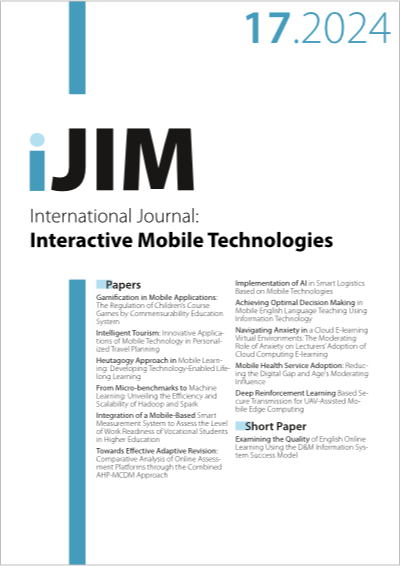Mobile Health Service Adoption: Reducing the Digital Gap and Age's Moderating Influence
DOI:
https://doi.org/10.3991/ijim.v18i17.50741Keywords:
mobile health services (MHS), businesses, medical professionals, marketingAbstract
In the past few years, mobile health services (MHS)—a growing topic in the healthcare sector—have received increasing attention. Technologies related to mobile health, or m-health, have several advantages for people, businesses, and medical professionals. Indeed, using m-health can help older people become more proactive patients and lessen the strain on health systems and financial resources. However, the potentially revolutionary impact of m-health is constrained since a large number of senior citizens oppose its adoption, which creates an age-based digital divide. Few studies have examined how public consumers of MHS adopt MHS, even though prior study on this topic is very substantial. We discover that user attitudes towards MHS are positively impacted by perceived benefits and usefulness, perceived barriers, and external cues. Perceived service availability also has a major impact on perceived benefits and usefulness, which, when combined with attitude, directly increases intention. Additionally, we discover that the MHS’s utilization intent has moderating effects. The final section discusses the implications for mobile health marketing. The results indicate that perceived ease of use, vulnerability, and severity are more significant factors for middle-aged and older users to use MHS. The moderator analysis confirmed that different age groups have specific moderating effects on the adoption of mobile health services.
Downloads
Published
How to Cite
Issue
Section
License
Copyright (c) 2024 B. Muruganantham, Hezerul Abdul Karim, Sarina Binti Mansor

This work is licensed under a Creative Commons Attribution 4.0 International License.



